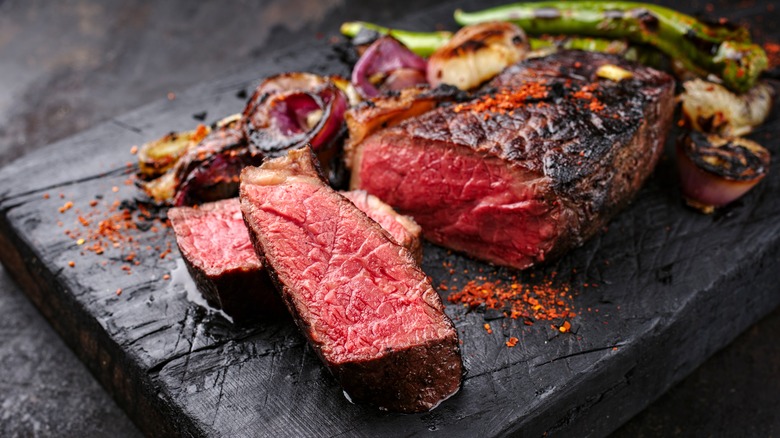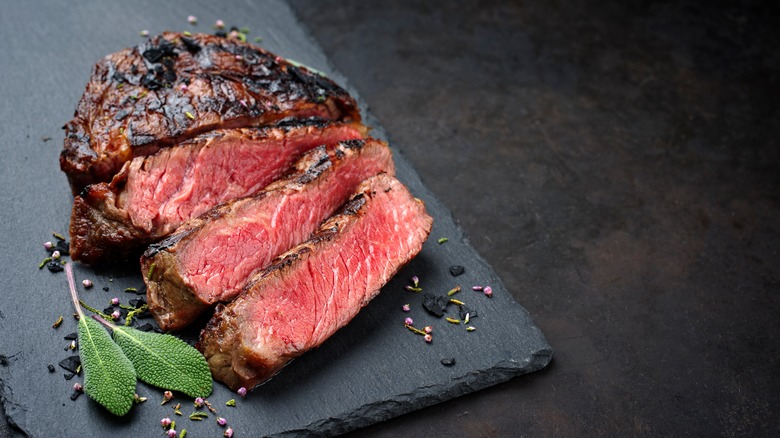How Long Should You Dry Age Beef For The Best Flavor And Texture
Once you get a taste of dry-aged beef, it's hard to go back. The process strengthens the savory flavor of the meat while tenderizing it, resulting in beef that's indescribably good. If you're considering dry aging steak at home, you'll need to know how long to leave it for the best results.
Dry aging beef involves hanging the meat in a temperature-controlled environment for weeks on end. After some time, the enzymes in the beef begin to break down, giving way to meat that's softer and richer. When it comes to the amount of time to leave the beef, there's a sweet spot, and K.C. Gulbro knows it well. The chef ambassador for Certified Angus Beef and owner of FoxFire and Copper Fox stays within a set time frame when dry aging his own beef. "We dry ours for a minimum of 35 to 40 days, but the optimal time is 28 to 45," he says. "This time will allow your meat to tenderize and develop flavor."
At around two or three weeks of dry aging, the flavors begin to change, but the classic, umami flair of dry-aged beef is yet to appear. Once the four week mark is hit, the taste gets stronger and the texture is noticeably more tender. Gulbro allows his beef to age a little longer, which lends the meat a slightly tangy taste.
When should you stop dry aging your beef?
As time goes on, the flavor and smell of the meat will only get stronger, which makes dry-aged beef unique. While some may love the more concentrated effect on the meat, chef Gulbro notes that there's a certain time where the process must come to an end. "Anytime longer than 50 to 60 days will give the dry-aged steak an added 'funk,' resulting in a bleu cheese-like flavor," he explains. "This may be off-putting to some steak lovers."
The cutoff time is important to prevent the pungent flavor from overtaking the meat. If you're a casual steak fan, you may prefer your meat to simply have a tinge of funky flavor that enhances it, rather than an overwhelming taste that masks the beef. However, exceeding 60 days isn't technically unsafe for dry-aged beef; the process can go on as long as 240 days. How long you let it age is simply a matter of preference.
It's common for mold to grow on the surface of the steak, but as long as it's still red inside when you cut it away, it's safe to eat. The telltale sign that your dry-aged steak has gone bad, however, is if the dark red hue takes on a green tinge. That, along with a rotten smell, indicates that you need to toss out the beef and try again.

